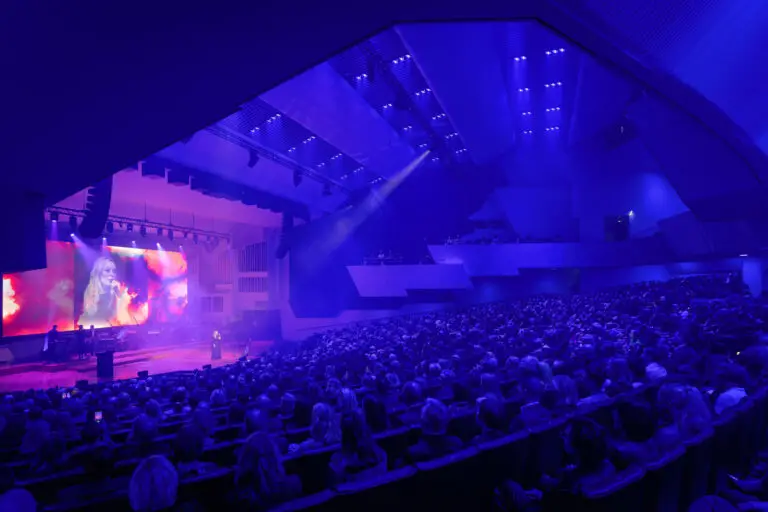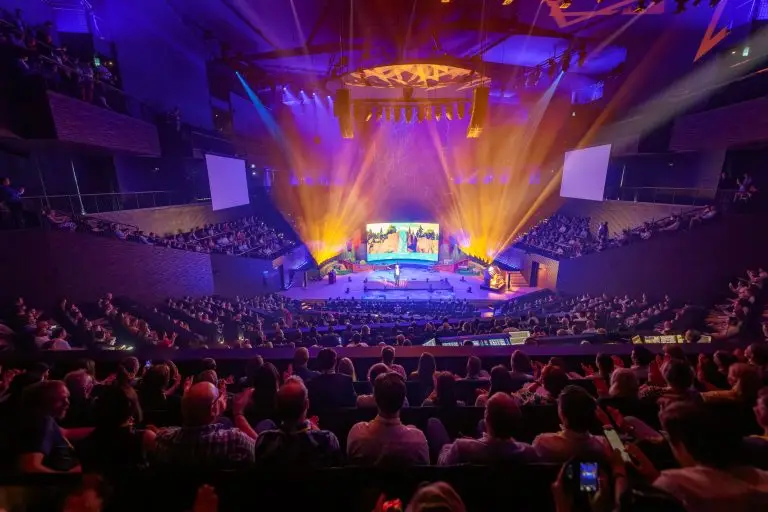A virtual event, webinar, streaming or remote conference facilitation? Various remote solutions have already been used to hold events for many years. Find out what the different options are for organising a physical event and what to consider.
There are several digital options for a physical event, and for years Woltti Group has applied a variety of flexible digital solutions in the events it has produced.
There are a number of Internet-based tools for organising online events that can be used for both video communication and interactive communication.
Should a physical event be turned into an online event, postponed or even cancelled altogether?
When considering organising a digital event instead of a physical event – whether by streaming or, say, using virtual technologies – it is essential to answer these three questions:
1) What kind of content does the event have?
2) What technical solutions are required in its presentation and implementation?
3) How is the event to be moderated?
Events that focus on internal communications or simply on sharing information are generally easy to arrange online, while some of the benefits of face-to-face meetings are lost in online meetings with customers if the idea is to build relationships.
A lot also depends on the target group. If it is highly likely that the audience can be attracted to the electronic channel and persuaded to stay there for the duration of the event, it will be worthwhile to organise a remote event. If, on the other hand, it is unlikely that the audience can be reached without the experiences and networking opportunities offered by a physical event, the investment in an online event may not pay off.
How do you convert a physical event into a remote one?
1. Choose your space carefully
Organising a digital event is somewhat different from organising a physical event. The venue is important in organising any kind of event, but the space requirements for online participation differ from having a large number of people in one place.
Since the event is videoed, the space must be a studio-standard environment. This means a video lighting kit and a sufficient ceiling height for optimal lighting and sound.
An event can also be a hybrid of a physical event and an online event. In this case, the venue must be appropriate not only for the audience attending but also for broadcast production.
A rule of thumb is that you should not stream an event from your company’s conference room. Conference rooms are not usually suitable for online events and the firewall that protects your company’s IT infrastructure may also cause unexpected problems in streaming. It may be difficult to solve every problem in advance, and the uploading quality may vary from day to day.
2. Take streaming delays into account
When streaming video of an event from one location to multiple recipients, there is an inevitable delay of 30–60 seconds. Real-time streaming can be delivered using point-to-point transmission.
So if there is a keynote speaker whose speech is being transmitted through a computer, a point-to-point connection can be established between the main venue’s AV control system and the speaker’s computer. Those watching the event on their own devices will still have a delay in the stream.
The delay does not usually interfere with the participation experience, but it must be acknowledged if the event encourages interaction. In such cases, audio participation will not be the best option but it is advisable to apply platforms that allow for the use of chat functions, message walls, polls or word clouds for online participation.
The participant could also have two devices, one for following the event stream and the other to enable participation through an application.
3. Plan an experience for all different groups of participants
When organising a hybrid event, which some of the audience attend at the main venue, some as a group in an office conference room and some remotely using their own devices, the planning of the experience has to take all these audiences into account.
The needs of those watching the event at home and of those queueing for the toilet at the venue must be considered when planning the frequency, length and number of breaks.
In terms of the selection of technologies and the presentation of the content, the experience can be enhanced by the use of existing channels that are familiar to the participants. In an in-house event, for example, it often makes sense to use conventional tools and channels to distribute materials, even if these are not the primary event channels.
A fun way to engage those taking part via their own computer is to install a 360 camera in one of the venue seats, which allows remote participants to feel almost like they are there. Depending on its location, a 360 camera can also give viewers access to restricted or no access areas such as the front-row seat at a fashion show.
4. Moderation is particularly important in online events
Hybrid event moderators are required to be alert to various audiences. For example, stand-up comedy and communal engagement do not work the same way for individual remote participants as for those attending the physical event.
Moderators must also remember to consider and process messages and comments sent by remote participants. In addition to moderators who forward content, it is a good idea to have a moderator who reviews comments and questions posted to the message wall in advance and removes any unnecessary or inappropriate content.
It is usually recommended that hosts or moderators are in the same place to ensure seamless communication between themselves, even if the audience takes part in the event remotely. It is also important to make remote participants feel like they are part of the event.
Are you thinking of organising a digital event instead of a physical one? Get in touch: jarkko.kivikoski@wolttigroup.fi


